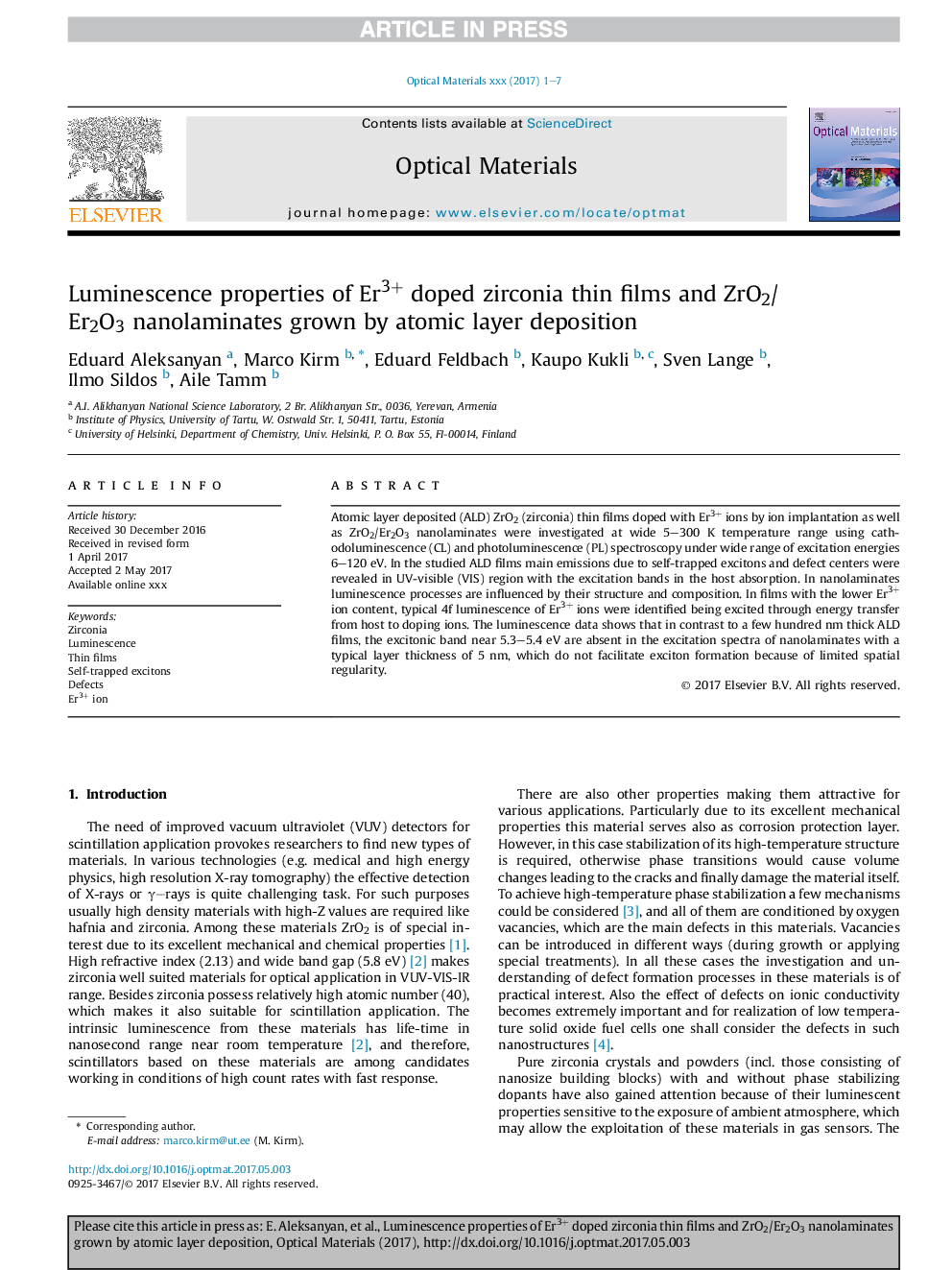| Article ID | Journal | Published Year | Pages | File Type |
|---|---|---|---|---|
| 7907870 | Optical Materials | 2017 | 7 Pages |
Abstract
Atomic layer deposited (ALD) ZrO2 (zirconia) thin films doped with Er3+ ions by ion implantation as well as ZrO2/Er2O3 nanolaminates were investigated at wide 5-300Â K temperature range using cathodoluminescence (CL) and photoluminescence (PL) spectroscopy under wide range of excitation energies 6-120Â eV. In the studied ALD films main emissions due to self-trapped excitons and defect centers were revealed in UV-visible (VIS) region with the excitation bands in the host absorption. In nanolaminates luminescence processes are influenced by their structure and composition. In films with the lower Er3+ ion content, typical 4f luminescence of Er3+ ions were identified being excited through energy transfer from host to doping ions. The luminescence data shows that in contrast to a few hundred nm thick ALD films, the excitonic band near 5.3-5.4Â eV are absent in the excitation spectra of nanolaminates with a typical layer thickness of 5Â nm, which do not facilitate exciton formation because of limited spatial regularity.
Related Topics
Physical Sciences and Engineering
Materials Science
Ceramics and Composites
Authors
Eduard Aleksanyan, Marco Kirm, Eduard Feldbach, Kaupo Kukli, Sven Lange, Ilmo Sildos, Aile Tamm,
